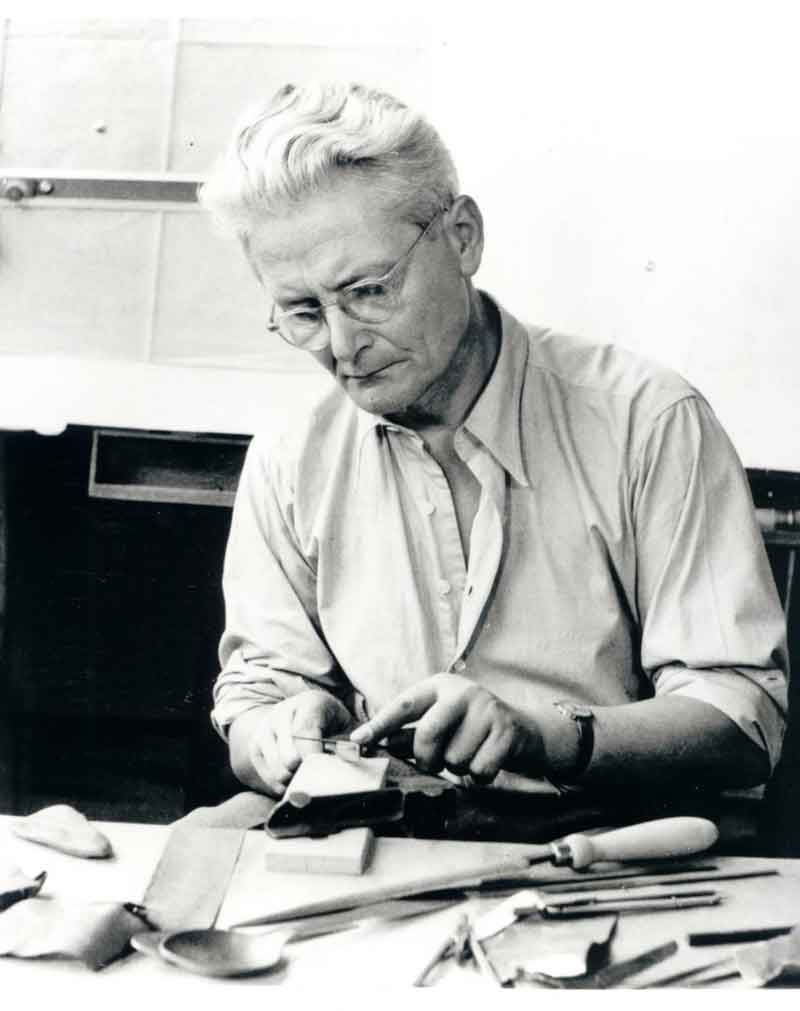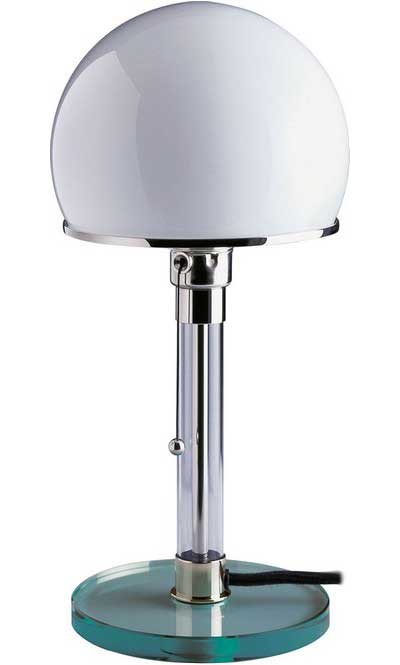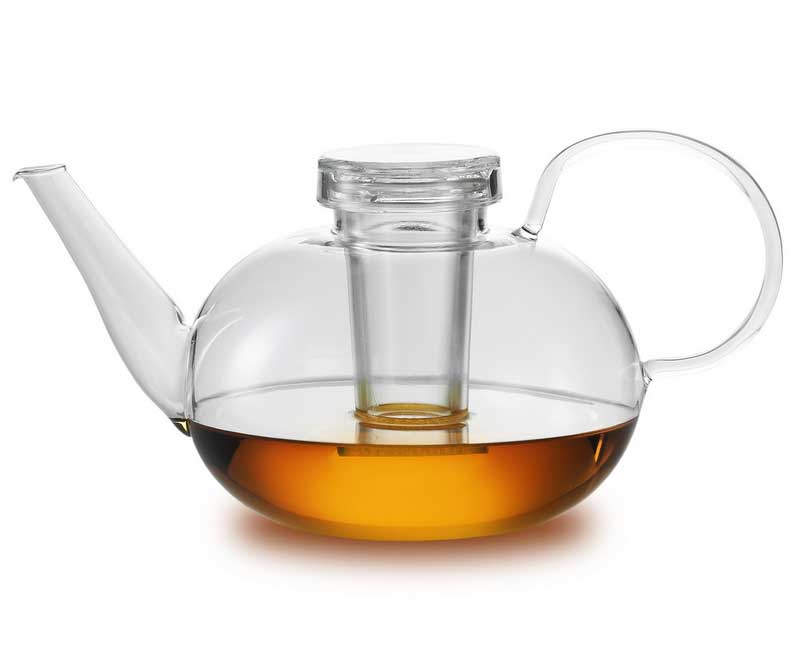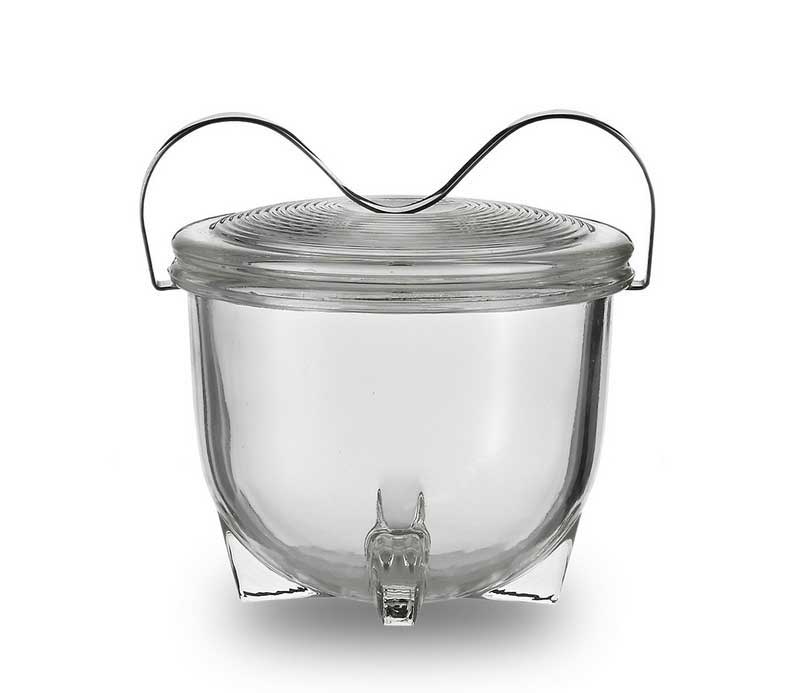German industrial designer and printmaker. (1900-1990)
He began his artistic training as an apprentice in the design office of a Bremen silverware factory (1914-18) and attended lessons in script and drawing at the local Kunstgewerbeschule (1916-19). A grant enabled him to continue his studies at the famous Zeichenakademie in Hanau (1919-22), where he received a varied training including silversmithing, engraving, design and modelling.

The graphic works that he produced in 1920-23 were probably made during a short stay in Bremen and at the Worpswede artists' colony; they are mostly woodcuts and engravings with religious themes, for example Death and the Virgin (woodcut, 1921; Bremen, Focke-Mus.), motifs from everyday life and the world of work. These are mostly in a brittle style, expressing themes of destruction, hunger, pain, suffering and death. By 1923 the themes became more optimistic and were depicted with a soft voluminosity.
In 1923 Wagenfeld entered the metal workshop of the Weimar Bauhaus, where he worked under László Moholy-Nagy. He submitted a gravy-boat for his apprenticeship examinations in 1923. His time at the Bauhaus was the beginning of a long and fruitful period as a designer and model-maker of industrially-produced consumer goods that made him famous worldwide. In 1923-4, in collaboration with Karl J. Jucker, he created the famous Bauhaus table-lamp, with hemispherical frosted-glass shade, glass stem and base, which has continued to be reproduced since the first models were made (Berlin, Tiergarten, Kstgewmus., 1983, 73; 1972, 46). Its construction and design, aimed at industrial production, demonstrated the spirit of the industry-oriented second Bauhaus phase (from c. 1925).

From 1926 to 1930 Wagenfeld became an assistant in the metal workshop of the Staatliche Bauhochschule in Weimar. He worked mostly on models of lamps and household objects such as bowls and kettles for various companies (including the Bau- and Wohnungskunst GmbH, Weimar). After the closure of the school (1930), the Finance Ministry of Thüringen commissioned him to improve the quality of glass production by the glass-blowers in the Thüringer Wald.
Wagenfeld's committed attempts to do this failed owing to the lack of cooperation of those involved. A year later he held a professorship at the Staatliche Kunsthochschule in Berlin (1931-5), also working at the Schott & Gen. glassworks in Jena (1931-5). Under his artistic direction the company produced many household containers made of heat-resistant glass, for example the Wagenfeld tea service (1930-34), which retained its popularity owing to its elegance (Berlin, Tiergarten, Kstgewmus., 1975, 44; 1986, 9). The functional and unpretentious beauty of these Jena glass products was influential on other manufacturers.
One of Wagenfeld's most successful posts was as artistic director (1935-44) of the Vereinigte Lausitzer Glaswerke (VLG) in Weisswasser. With his team of colleagues, which included such people as Heinrich Löffelhardt (1901-79) and Hermann Gretsch (1895-1950), he produced high-quality functional glassware sold under the name of Rautenglas. He also carried out decisive improvements in the field of compressed glass, an important result of which is the Kubusgeschirr storage ware (1938), rectangular stackable containers of various sizes (Berlin, Tiergarten, Kstgewmus., 1981, 108).


World War II brought Wagenfeld's career at VLG to an end. After military service and a period as a prisoner in the USSR (1944-5), he went to Dresden (1946), before spending two years in Berlin (1947-9), where his posts included a professorship at the Hochschule für Bildende Künste. From 1949 he was based in Stuttgart. After a brief period as an industrial design consultant (1949-50), Wagenfeld devoted himself exclusively to independent work as a designer and model-maker in manufacturing industry, working from 1954 to 1978 in his own workshop with a small team of colleagues.
He also worked for a number of firms including WMF/Geislingen (hollow stainless steel and silverware, cutlery, glass containers), Peill & Putzler/Düren (drinking glasses and lamps), Lindner GmbH/Bamberg (lamps) and Joh. Buchsteiner/Gingen Fils (plastic ware). He designed services and other consumer products for the porcelain industry (Rosenthal AG/Selb; Fürstenberg/Weser).
Wagenfeld discussed his aims and experiences in a large number of publications. His work was not concerned with selective improvements but with generally raising the level of quality of industrial consumer items, a task that would have been impossible without the equally important contribution of those involved in the production process. Walter Gropius described Wagenfeld's work as a consistent application of the ideas of the Werkbund and the Bauhaus in his emphasis on socially responsible work. His designs are characterized by their functionalism and unobtrusive beauty and by being reworked several times.